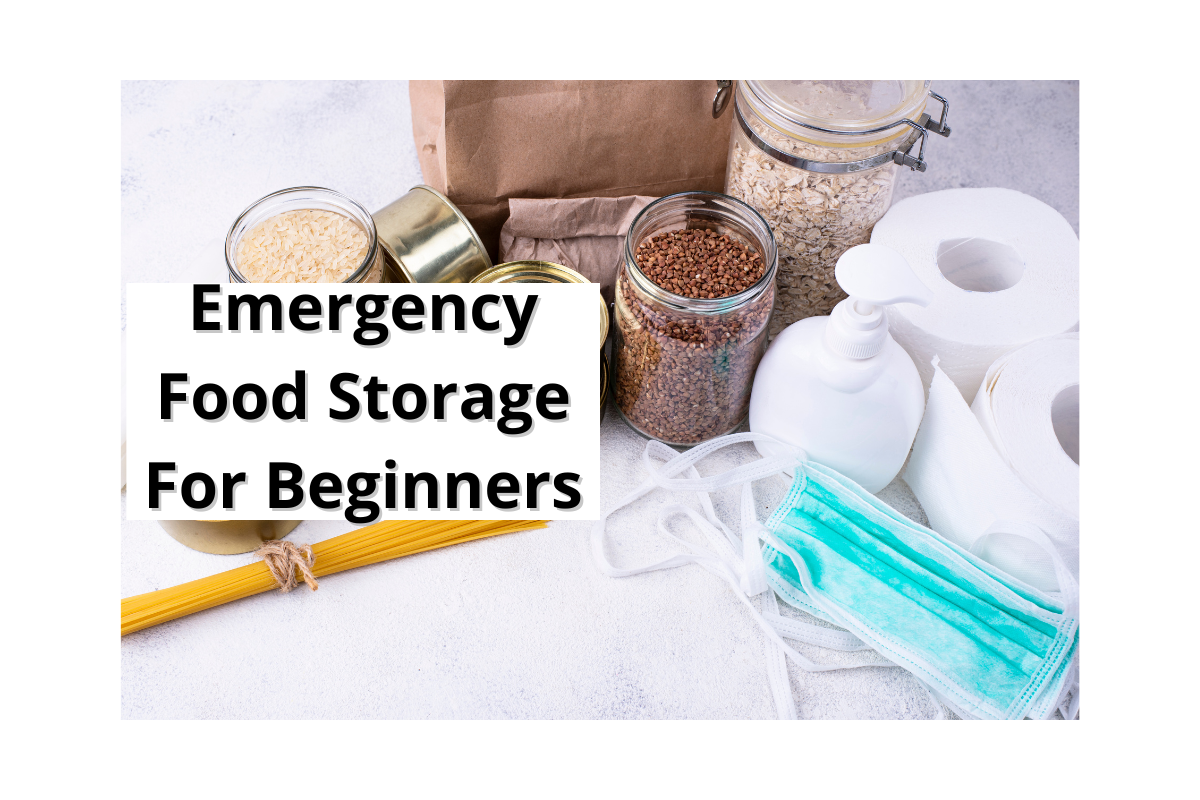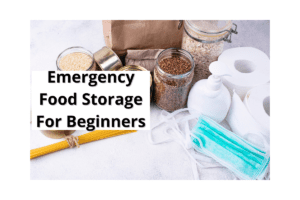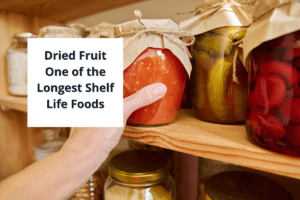As you open your pantry and find it bare, imagine a scenario where disaster has struck, leaving your usual food supply disrupted. What would you do? This is where the importance of emergency food storage comes into play, offering a lifeline during challenging times.
In my guide, I delve into the significance of emergency food storage and provide a comprehensive plan for ensuring household nourishment when faced with unexpected crises. From natural disasters to unforeseen emergencies, having a well-thought-out food storage plan can make all the difference in ensuring your family’s well-being.
In times of uncertainty, being prepared is key. I aim to explore the ins and outs of emergency food storage, from the types of food to store to how to create a sustainable plan that covers essential nutrients and caloric needs. Join me on this journey to understand why emergency food storage is a crucial aspect of household readiness.
Post Contents
Togglenon perishable food
Why Emergency Food Storage Matters
In times of uncertainty and unforeseen events, having an emergency food supply can be a crucial lifeline. Let’s delve into why preparing for the unexpected with adequate food storage matters.
Ensuring Preparedness for Various Scenarios
Having an emergency food supply is not just about natural disasters; it encompasses a wide range of scenarios. From unforeseen weather calamities to potential pandemics or even disruptions in the supply chain, being prepared with food can provide a sense of security and stability during challenging times.
Promoting Self-Reliance and Reducing Dependence
Emergency food storage empowers individuals and families to become more self-reliant. Instead of relying solely on immediate access to grocery stores or external resources during emergencies, having a stocked pantry allows individuals to sustain themselves and their loved ones independently for a certain period, fostering a sense of self-sufficiency.
Building Resilience and Adaptability
Emergency food storage goes beyond mere sustenance; it symbolizes resilience and adaptability in the face of adversity. Just as a squirrel gathers nuts for the winter, stocking up on non-perishable food items prepares individuals to weather unexpected challenges with fortitude and readiness, fostering a mindset of resilience in the face of uncertainties.
Strengthening Community and Family Bonds
Strengthening Community and Family Bonds
Sharing the importance of emergency food storage with others can strengthen community bonds and familial relationships. Collaborating with neighbors or involving family members in the preparation and planning process can not only enhance emergency readiness but also create a sense of unity and support within communities, ensuring collective well-being in times of need.
By recognizing the significance of emergency food storage in various aspects of life, individuals can proactively prepare for unforeseen circumstances, safeguard their well-being, and instill a sense of resilience and unity within their communities. Embracing preparedness today can pave the way for a more secure and confident tomorrow.
For more information on emergency food storage, check out Emergency Food and The Importance of Emergency Food Storage.
Assessing Your Needs
When it comes to emergency food storage, one of the crucial steps is accurately assessing your needs. Determining the right amount of food and water involves a combination of factors, including dietary restrictions, allergies, preferences, storage space, and rotation schedules. Let’s dive into how you can effectively evaluate your requirements for emergency provisions.
Consider Dietary Restrictions and Allergies
Taking into account any dietary restrictions or allergies is paramount when planning your emergency food supplies. Whether you have gluten intolerance, nut allergies, or specific dietary preferences, it’s essential to choose food options that align with your nutritional needs. Including a variety of non-perishable items that cater to your dietary requirements ensures that you have suitable sustenance during emergencies.
Establish a Rotation Schedule
Developing a rotation schedule for your emergency food and water provisions is essential to maintain freshness and quality. Create a system where you consume and replenish items before they expire to ensure you always have a reliable stock of supplies. Regularly check expiration dates, rotate older stock into everyday use, and replenish your emergency supplies accordingly to keep them up to date and ready for any situation.
By meticulously assessing your needs based on dietary restrictions, storage space availability, and establishing a rotation schedule, you can effectively plan and maintain a well-rounded emergency food storage strategy tailored to your requirements.
For further insights on emergency food storage, you can explore products and resources from reputable providers like ReadyWise, Mountain House, and My Patriot Supply.
Shelf-stable Items
Stocking up on essential shelf-stable items forms the foundation of your emergency food supply. Include a variety of grains like rice, pasta, and oats that have long shelf lives. Canned goods such as beans, vegetables, and fruits are convenient and nutritious options. Dried foods like nuts, seeds, and jerky provide protein and energy. Don’t forget cooking essentials like oil, salt, and spices to enhance the flavor of your emergency meals.
Long-term Storage Foods
When planning for the long term, consider investing in freeze-dried meals that retain quality and nutrition for an extended period. Utilize Mylar bags to store bulk food items efficiently. Food-grade buckets serve as durable containers for storing grains and legumes. Oxygen absorbers and desiccants help maintain the freshness and longevity of your stored food items.
Water Supply
Adequate water supply is just as vital as food during emergencies. Stock up on bottled water for immediate consumption. Explore water purification methods like boiling, chemical treatment, or using water filters to ensure water safety. Collecting and storing rainwater in clean containers can also supplement your water reserves.
Supplementary Items
In addition to food and water, consider including supplementary items in your emergency provisions. Multivitamins can help compensate for potential nutrient deficiencies during stressful times. Don’t forget about your pets; store ample pet supplies to meet their needs. Necessary equipment like camping stoves and fuel can be valuable for cooking food when regular utilities are unavailable.
Remember, preparedness is key when it comes to building your emergency food supply. By incorporating a variety of shelf-stable items, long-term storage foods, sufficient water provisions, and supplementary items into your emergency plan, you can ensure greater resilience in the face of unforeseen circumstances.
Stay proactive and stay safe!
Frequently Asked Questions
In times of crisis or emergency situations, having the right amount of food and water stored can provide a sense of security and preparedness. Let’s address some common questions regarding emergency food storage to ensure you are well-equipped for any unforeseen events.
How much food and water should I store for emergencies?
It is recommended to store at least a three-day supply of non-perishable food items for each person in your household. This includes canned goods, dry foods like rice or pasta, and high-energy snacks. For water, the standard guideline is one gallon per person per day for drinking and sanitation. It’s crucial to consider the specific needs of your family and any pets when calculating your storage amounts.
What is the shelf life of emergency food supplies?
The shelf life of emergency food supplies varies depending on the type of food stored. Canned goods typically have a long shelf life, lasting up to 1-5 years or even more if stored in a cool, dry place. Dry foods like rice and pasta can last 1-2 years or longer when properly sealed in airtight containers. It’s essential to regularly check expiration dates and rotate your supplies to ensure freshness.
How should I rotate and maintain my emergency food stockpile?
To maintain your emergency food stockpile, practice the “first in, first out” method to ensure that you use the oldest items before the newer ones. Regularly inspect your supplies for any signs of spoilage, pests, or damage. It’s advisable to create a rotation schedule and consume and replace items nearing their expiration dates. Additionally, consider diversifying your food options to maintain a balanced diet during emergencies.
What are affordable options for building an emergency food supply?
Building an emergency food supply doesn’t have to break the bank. Look for sales and discounts on non-perishable items at your local grocery store. Buying items in bulk can often be more cost-effective. Consider purchasing items like beans, rice, and oats, which are nutritious, versatile, and budget-friendly. Utilizing coupons and shopping during seasonal promotions can also help you save money while building your stockpile.
By addressing these frequently asked questions and taking proactive steps to build and maintain your emergency food storage, you can ensure you and your loved ones are better prepared for unexpected situations. Remember, being prepared today can make all the difference tomorrow.
Conclusion
In times of uncertainty, having an emergency food supply is crucial for ensuring your well-being and that of your loved ones. By storing nutritious food in a cool, dry place, you can maintain your strength and resilience during crises. Remember to wash your hands before handling food and check expiration dates regularly to ensure food safety.
I encourage you to start building your emergency food supplies today. To help you get started, here’s a printable checklist to guide you in creating a well-rounded stockpile: Take the first step towards preparedness and peace of mind by investing in your emergency food storage. Your future self will thank you for it!





